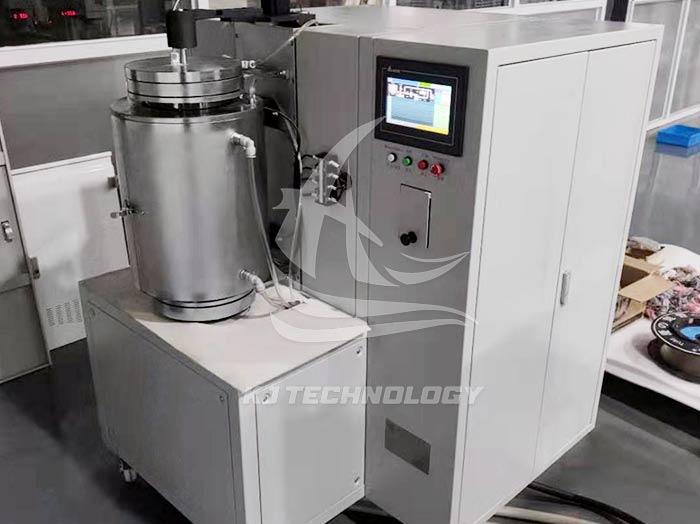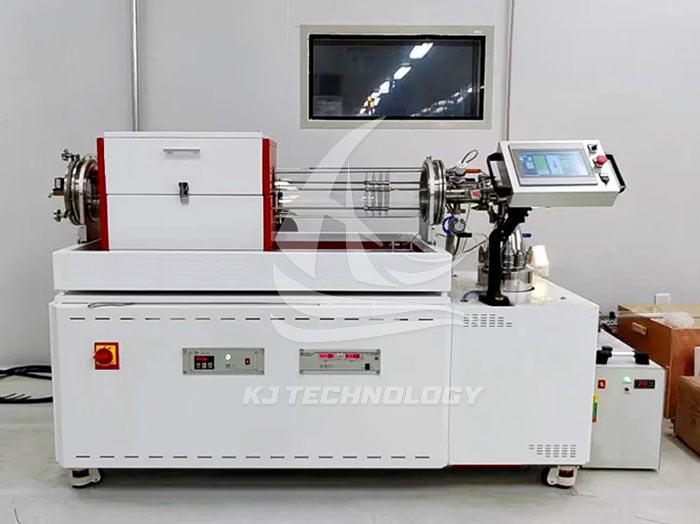What gases can be used in the lab graphite furnace?
 10-23-2025 Author: KJ technology
10-23-2025 Author: KJ technology
The gases that can be introduced into the laboratory graphite vacuum furnace mainly include inert gases (nitrogen, argon, helium), hydrogen, nitrogen hydrogen mixture, and some scenarios may also use special gases such as carbon monoxide and methane. The specific selection needs to be determined comprehensively based on material characteristics, process requirements, and equipment safety. The following is a detailed analysis:
1. Inert gas: protects materials and inhibits oxidation
Nitrogen (N ₂)
Application scenarios: Sintering of nitride ceramics (such as aluminum nitride), metal heat treatment (such as stainless steel annealing).
Function: As a protective atmosphere, it prevents the material from oxidizing at high temperatures and participates in nitriding reactions to form nitride phases.
Advantages: Low cost, easy to obtain, suitable for metals and ceramics that are sensitive to oxidation.
Argon gas (Ar)
Application scenarios: High purity material sintering (such as titanium alloys, semiconductor materials), vacuum brazing.
Function: It has extremely stable chemical properties, completely isolates oxygen, and avoids surface contamination of materials.
Advantage: Suitable for experiments that require extremely high atmosphere purity, such as transparent ceramic sintering.
Helium (He)
Application scenario: Rapid heating or cooling process (such as graphene preparation).
Function: High thermal conductivity, can accelerate heat conduction, and shorten process time.
Limitations: High cost, usually mixed with other gases for use.
2. Hydrogen (H ₂): reducing atmosphere, deoxidation and carburizing
Application Scenario:
Transparent alumina ceramic sintering (reducing aluminum ions and decreasing oxygen vacancies).
Metal carburizing treatment (such as surface hardening of tool steel).
Purification of rare earth elements (reduction of oxides).
Function:
As a reducing agent, it removes oxygen impurities from materials.
Participate in the carburizing reaction to form a high hardness carbide layer.
Risk: Flammable and explosive, strict control of concentration (usually ≤ 5%) and equipment sealing is required.
3. Nitrogen hydrogen mixture: balanced oxidation and reduction
Typical ratio: H ₂ (5%~10%)+N ₂ (90%~95%).
Application Scenario:
Bright annealing of stainless steel (to prevent oxidation and decarburization).
Powder metallurgy sintering (balancing reduction and protection).
Function: Hydrogen inhibits oxidation, nitrogen dilutes hydrogen concentration, and reduces explosion risk.
4. Special gases: tailored to specific process requirements
Carbon monoxide (CO)
Application scenario: Sintering of carbide ceramics (such as silicon carbide).
Function: As a carbon source, participate in carbonization reactions.
Risk: Toxic, requiring exhaust gas treatment system.
Methane (CH ₄)
Application scenario: Diamond deposition (chemical vapor deposition, CVD).
Function: Decompose to provide carbon atoms and form diamond structure.
Condition: High temperature cracking device is required, usually used in combination with hydrogen gas.
5. Core principles of gas selection
Material compatibility:
Active metals such as titanium and zirconium should strictly avoid oxygen and prioritize argon or vacuum.
Ceramic materials can be selected from inert gases or reducing gases based on their composition.
Process objective:
Sintering densification: Inert gas protection to prevent pore oxidation.
Surface modification: Hydrogen or mixed gas is used to achieve carburizing and deoxidation.
Purification treatment: Hydrogen gas reduces impurities.
Equipment safety:
Explosion proof devices and oxygen concentration monitors are required for the use of hydrogen gas.
Toxic gases (such as CO) require sealed operation and exhaust gas treatment.








